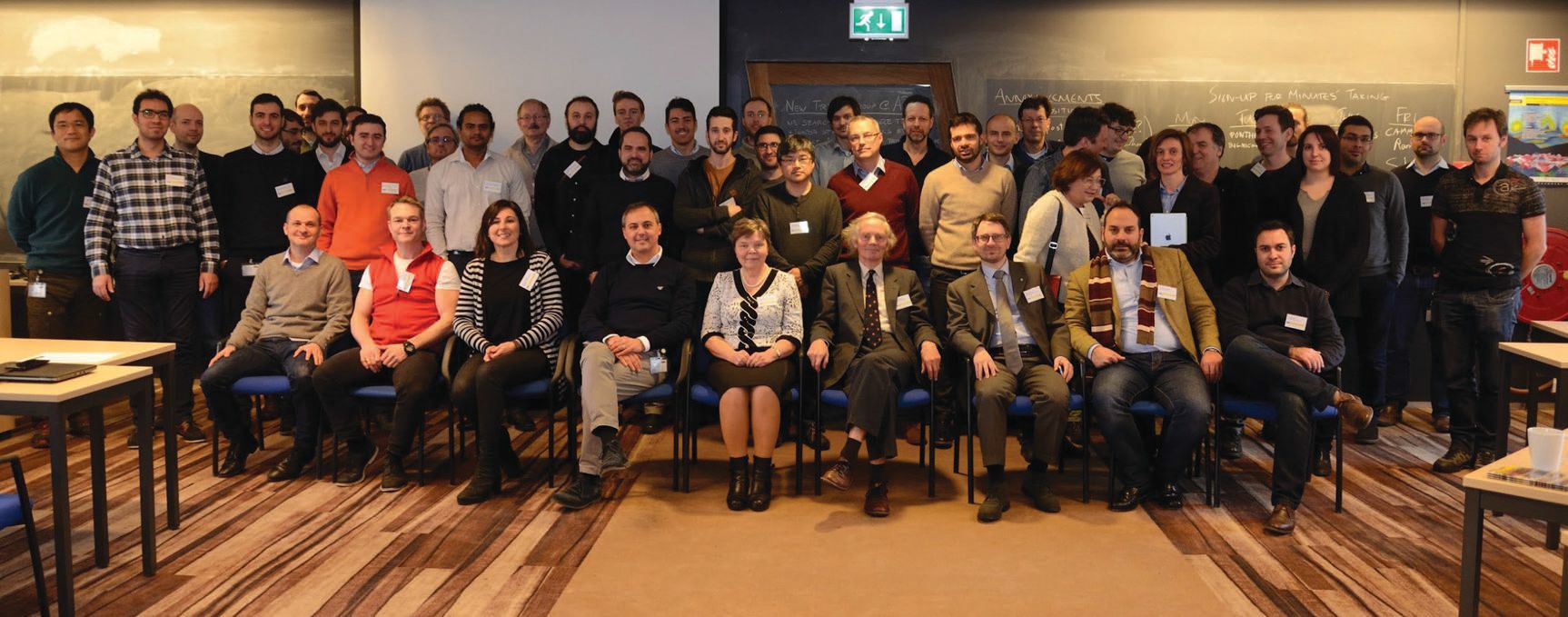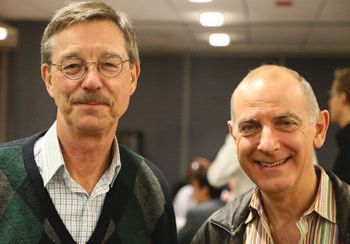Tribological models in Leiden
Drs. Wilfred T. Tysoe & Nicholas D. Spencer | TLT Cutting Edge June 2017
A small, focused workshop deals with the pressing issues of roughness, contact and modeling.

Participants at the Micro/Nanoscale Models for Tribology Lorentz Workshop in Leiden, Netherlands.
IN JUST A FEW MONTHS MORE THAN 1,000 ORAL AND POSTER PRESENTATIONS will be delivered at one of the largest-ever conferences on tribology, the 6th World Tribology Congress, Sept. 17-22 in Beijing, China (
1). Such mega-events have the advantage of providing an overview of the entire field and are, of course, a great opportunity to catch up with the worldwide community of tribologists.
A tribological conference of a very different kind (and scale) took place in Leiden, Netherlands, earlier this year titled Micro/Nanoscale Models for Tribology (
2). During the five-day period from Jan. 30 to Feb. 3 some 60 physicists, materials scientists and engineers (including 20 junior researchers and several representatives from the industry) from 14 countries tackled the issues of roughness and multiscale, analytical, microscale and atomistic modeling.
Major topics the organizers addressed included:
a.
the representation and measurement of roughness on the micro- and nanoscale and the role of fractality of roughness
b.
an input for analytical and computational models
c.
the roles of roughness and adhesion in metallic (elastic/plastic) and polymeric (viscoelastic and adhesive) tribological interfaces
d.
the role of scale on plasticity and how it affects contact and friction
e.
bridging across the micro- and nanoscales with tribological models and the breakdown of continuum theories.
The goals of the workshop were to assess the state of the art in these topics via keynote lectures and roundtable discussions and to plan a roadmap for collaborative projects to be funded over the next five to 10 years through European research funds. The mostly theoretical topics were placed in context by means of strategically placed talks by experimentalists and industrial tribologists.
By the end of the week a consensus had emerged that while the community is now highly skilled at addressing problems at various scales of great complexity that involve purely elastic behavior, properly accounting for the effects of plasticity, adhesion, friction, wear, lubrication and surface chemistry in tribological models remains in its infancy.
Numerical methods were discussed in terms of their inherent length scales: finite-element and boundary-element methods versus discrete-dislocation dynamics for the microscale, and classical versus
ab initio molecular dynamics and density functional theory for the nanoscale. However, it was clear that the future lay in employing concurrent or hierarchical multiscale schemes to couple these methods. The industrial participants emphasized that while they were very keen to implement many of the methods discussed, to optimize and control their processes and products, there was an urgent need to develop improved tools that require less computational effort and time.
A highlight at the beginning of the week was a presentation of the Contact-Mechanics Challenge (
3) by Martin Müser, Saarland University, Germany. The results of this tremendous group effort to compare the utility of a variety of theoretical, modeling and experimental approaches to evaluating contact parameters will be published in an upcoming issue of Tribology Letters. The challenge had been announced on the 50th anniversary of the classic paper by Greenwood and Williamson (
4) on the contact mechanics of nominally flat but microscopically rough surfaces. Professor Jim Greenwood, who is a coauthor of the challenge paper, also was an active participant at the Leiden meeting.
Tribology meetings of this kind, with an ambitious agenda and goals, are rare but invaluable. It is to be hoped that the enthusiasm and impetus of the Leiden conference will be felt in significant collaborative developments in the field of tribological modeling for years to come.
FURTHER READING AND LINKS
1.
See
www.wtc2017.org/en for more information.
2.
Click
here (under construction).
3.
Tysoe, W.T. and Spencer, N.D. (2015), “Contact-mechanics challenge,” TLT,
71, p. 96.
4.
Greenwood, J.A. and Williamson, J.B.P (1966), “Contact of nominally flat surfaces,”
Proceedings of the Royal Society A,
295, p. 300.
 Eddy Tysoe is a distinguished professor of physical chemistry at the University of Wisconsin-Milwaukee. You can reach him at wtt@uwm.edu
Eddy Tysoe is a distinguished professor of physical chemistry at the University of Wisconsin-Milwaukee. You can reach him at wtt@uwm.edu.
Nic Spencer is professor of surface science and technology at the ETH Zurich, Switzerland, and editor-in-chief of STLE-affiliated Tribology Letters journal. You can reach him at nspencer@ethz.ch.